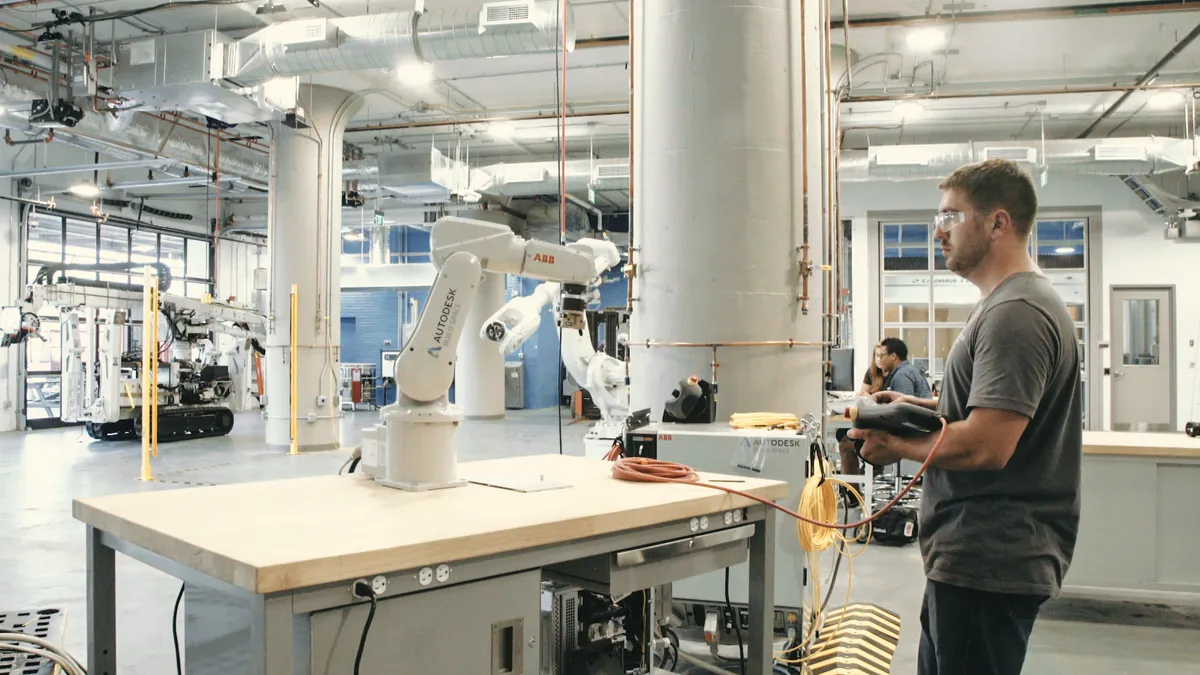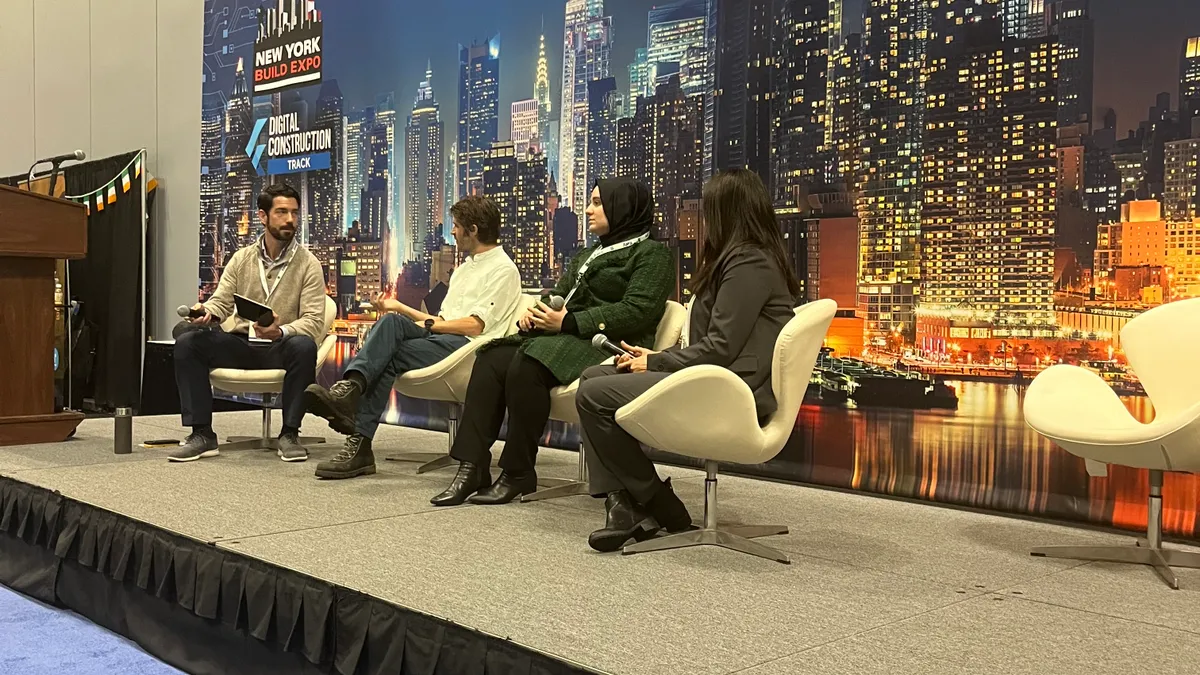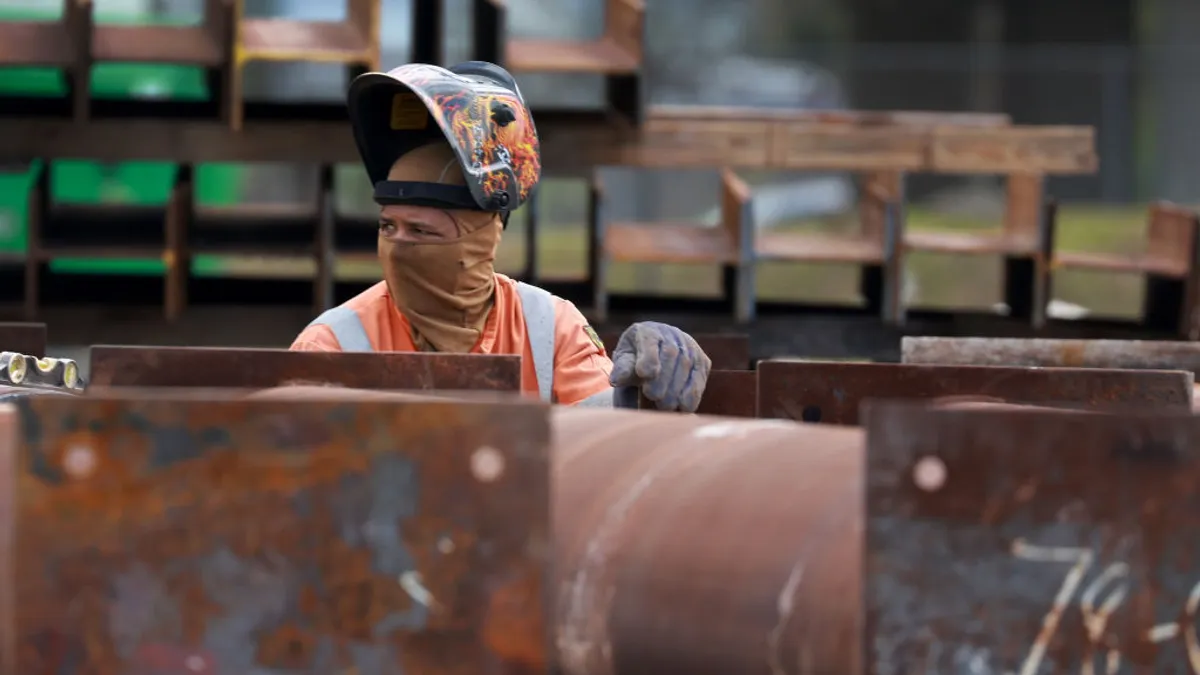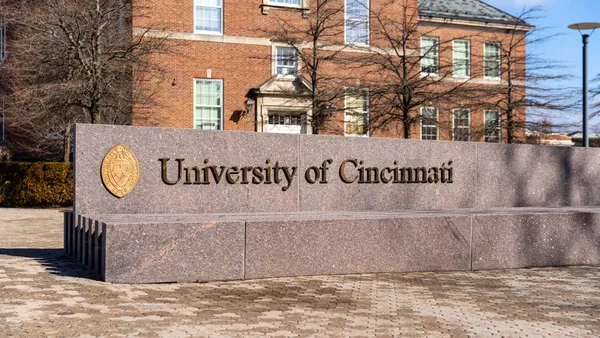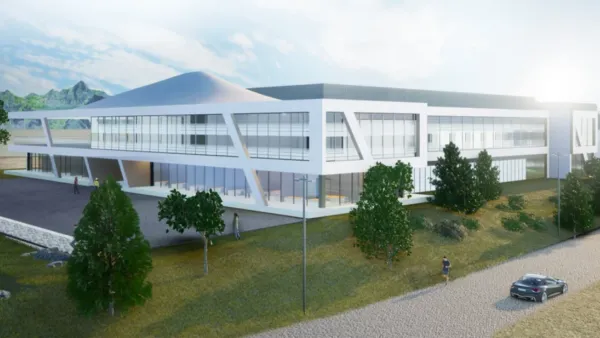The future of construction is taking shape in the lab today. And they aren't just any old labs. Spanning tens of thousands of square feet and incorporating 3D printers, CNC machines, robotic arms and more, research and development workshops are going high tech and increasing in scale while opening their doors to large companies and startups alike. Among them are architecture, engineering and construction firms seeking to explore the potential for factory-based construction, where components are built in a controlled setting and shipped to the job site ready for assembly.
Last month, the 84,000-square-foot New Lab, developed as a public-private partnership in Brooklyn, NY's Navy Yard opened its doors. The facility boasts meeting and work spaces in addition to a full-fledged fabrication lab for use by its members, which represent 50 small and mid-size growth-stage companies and university projects.
It's not the only one. Today, AEC software developer Autodesk is opening its Building, Innovation, Learning and Design (BUILD) Space in Boston. The fabrication-minded research and development facility spans roughly 70,000 square feet, including the 34,000-square-foot BUILD fabrication lab as well as the company's flagship East Coast office and an AEC tech startup incubator. (The space has room to grow with a footprint of more than 100,000 square feet.) The goal, said Jim Lynch, vice president of Autodesk's building products group, is for project and research teams from academia, industry, and Autodesk to use the space to explore "next-generation" construction fabrication techniques by giving them unbridled access to equipment and collaborative partners that they otherwise would not have.
An added bonus: They work there rent-free.
"Time, money and space are scarce resources when you're a startup, and we want to help with at least two of those, which is a space to work and access to technology," Lynch said. Companies must cover their own insurance and materials costs.
BUILD's gear list includes six industrial robots, a five-ton bridge crane for assisting with large projects and moving equipment around the space, workshops for materials such as wood, metal and composites as well as 3D printers and large-format CNC routers and waterjets.
"We think the cutting edge work that's going to take place in the BUILD space will enable our developers [and] be enabled by our developers," Lynch said. "It's a pretty cool feedback loop to have."
Autodesk is known for acquiring or partnering with tech firms and absorbing their products into its portfolio. In June 2014, Autodesk announced that it would acquire The Living, a Boston-based architecture and design firm with a strong research bent, in order to create its Autodesk Studio, which explores novel construction methods. Earlier that year, the software juggernaut teamed up with Philadelphia-based architecture firm KieranTimberlake to launch Tally, a Web app to aid project teams in conducting life-cycle assessment of their product and material selections.
The BUILD space soft-opened this summer with Skanska among the companies using the space for events, in this case to host a BIM forum. The incubator, which was moved from Autodesk's former Waltham, MA, office will double in size at the new space. It includes a mix of small companies and university research groups serving the AEC space in some capacity. Among them is construction risk management firm Pillar Technologies, whose sensor networks monitor hazardous conditions in the built environment such as fire, high humidity and mold, is among the first companies to join the BUILD incubator. Other participants include Building Conversation, which develops mobile AR software; Concrete Sensors, which develops sensing technology to be added during concrete pours to provide real-time feedback on the material’s strength and trying time; as well as location-services provider Redpoint Positioning, which focuses on safety management for construction sites.
Autodesk is a technology partner in the New Lab, too, offering training, software and mentorship to member companies. Additionally, the software developer runs the 12,000-square-foot Pier 9 fabrication lab in San Francisco, which focuses on the manufacturing industry. BUILD is the latest effort by the software giant to merge its AEC expertise and software know-how to capitalize on the growing trend toward factory-based fabrication.
"You go to Google to find something, you go to Amazon to buy something," Lynch said. "If you want to make something, we want you to come to Autodesk. That's a pretty important transformation for the company."



